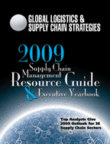
Visit Our Sponsors |
|
|
|
|
|
|
|
|
|
|
|
|
|
|
|
|
|
|
|
|
|
|
|
|
|
|
|
|
|
|
|
|
|
|
|
|
|
|
|
|
|
|
|
|
|
|
|
|
|
|
|
|
|
|
|
|
|
|
|
|
|
|
|
|
|
|

Aberdeen Group's recent survey of working capital optimization practices at 179 companies (Working Capital Optimization: Finance and Supply Chain Strategies for Today's Business Environment, October 2008) showed that 71 percent of firms cite working capital optimization (WCO) as a high priority, up from 66 percent in 2007. The top pressure driving this focus is the mandate by financial stakeholders to improve working capital metrics. This study shows that companies are responding to the tighter financial conditions with more focus on short-term internal strategies of extending Days Payable Outstanding and reducing Days Sales Outstanding and are exploring all possible ways of increasing cash flow internally.
In fact, in another recent study (Supply Chain Risk Management: Building a Resilient Global Supply Chain, July 2008), 11 percent of companies said that the shortage of working capital to support operations had disrupted their supply chain over the past 12 months; 13 percent said that the deterioration of their key suppliers' financial standing had caused supply chain disruptions. In the current WCO survey, 9 percent cited inability to obtain financing externally because of the recently deteriorated financial market conditions as one of the top two pressures to focus on working capital management. As a result, the WCO survey shows that companies are planning to squeeze their suppliers with more stringent payment terms and adopt less favorable terms with customers, as they are becoming less willing to use their own cash to finance supply chain partners.
This study shows that global companies are increasing their focus on cash flow and working capital management, looking at all possible ways to drive cash internally through improved payables and receivables management and optimized inventory levels.
Companies need to establish an integrated view of working capital management, taking into account interrelationships between operational processes impacting working capital throughout the supply chain, including sales, operation, and manufacturing planning, demand and supply synchronization, inventory management, customer and supplier relationships, and financial management.
To develop an integrated strategy, interdependencies between processes need to be examined and central and regional WCO policies and desired goals need to be developed and enforced. Companies need to align metrics and improvement actions across their organizations, and establish accountability for the working capital improvements.
The Outlook
In today's increasingly volatile market conditions the importance of working capital optimization is growing. Ensuring financial supply chain visibility and accounts receivable and accounts payable processing automation is important for achieving efficiencies in this process. This study shows that Best-in-Class companies are more proactive in exploring opportunities to drive additional cash and are also further ahead in automating the processes that directly impact the working capital levers. Companies need to continue looking for creative finance and supply chain strategies and/or solutions internally to maintain adequate working capital to support operations and ensure profitable growth in today's complex global business environment.
RELATED CONTENT
RELATED VIDEOS
Timely, incisive articles delivered directly to your inbox.






